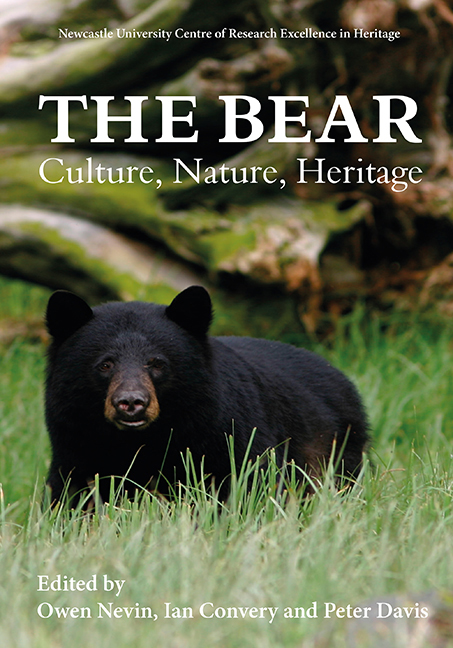Book contents
- Frontmatter
- Contents
- List of Illustrations
- Acknowledgments
- List of Abbreviations
- Foreword: The Bear: A Cultural and Natural Heritage
- Introduction: What is a Bear?
- Bear-People Interactions
- Bears in the Public Gaze
- Bear Biology, Management and Conservation
- Afterword: “It's Me Bear”: Reflections on a Unique Career Working with Bears
- List of Contributors
- Index
- Previous titles
11 - On the Oblique Imperative: What Revealing Conceals and Concealing may Reveal
Published online by Cambridge University Press: 21 March 2020
- Frontmatter
- Contents
- List of Illustrations
- Acknowledgments
- List of Abbreviations
- Foreword: The Bear: A Cultural and Natural Heritage
- Introduction: What is a Bear?
- Bear-People Interactions
- Bears in the Public Gaze
- Bear Biology, Management and Conservation
- Afterword: “It's Me Bear”: Reflections on a Unique Career Working with Bears
- List of Contributors
- Index
- Previous titles
Summary
Matrix: the cultural, social, or political environment in which something develops (Oxford Dictionary)
Look at my skin – look at my skin shine… (Dylan 1963)
It was an urgency to come here, […] My fear was that we would lose the opportunity of seeing these magnificent animals –
polar bear tourist in Kaktovik, Alaska (Goode 2016)
Since the 1980s the ecotourism sector has grown and grown. It is the fastest growing sector in tourism – growing at an annual rate of between 10%–15%. Tourism is one of the few sectors of the world economy that continues to grow despite the ups and downs in the world economy (World Tourism Forum, 2012)
In this chapter, we, as collaborative artists, follow the links between spectacle, image and ecotourism and, in this context, challenge the viability of expectations upon which ecotourism is fuelled. Implicitly, we offer a critique on its ethical sustainability, particularly where its regulation is, at best, patchily implemented. The specific frame for our inquiry here is the research undertaken for an art project Matrix, commissioned by the Anchorage Museum in Alaska where, from 2015–20, we are ‘Polar Lab Artists in Residence’. In this research, and the artworks arising, we have been examining interspecific, human and bear ecologies in the Arctic region.
THEATRE OF OPERATION
Somewhere out there, caught if you will like a seed, mid-flight and quivering on an obscure thread of the worldwide web, there exists a brief, 41-second clip of black and white video footage depicting an aerial search and the discovery of a freshly-dug polar bear den out on the North Slope – effectively, at the highest latitude of the USA.
We were shown this clip by US Fish and Wildlife agent Craig Perham when we met with him in Anchorage in 2015. In many ways, it is like many other clips from an archive of similar aerial surveillance missions in which an oil industry's attention, using thermal imaging Forward Looking Infra-Red (or FLIR) technology, turns away from the work of excavation, mineral extrac tion and pipeline monitoring, instead focusing on environmental stewardship and the purposes of conservation. The principle is simple – up on this Arctic coast in late autumn and early winter, biologists join together to fly with oil industry pilots in search of occupied polar bear dens.
- Type
- Chapter
- Information
- The Bear: Culture, Nature, Heritage , pp. 131 - 146Publisher: Boydell & BrewerPrint publication year: 2019

